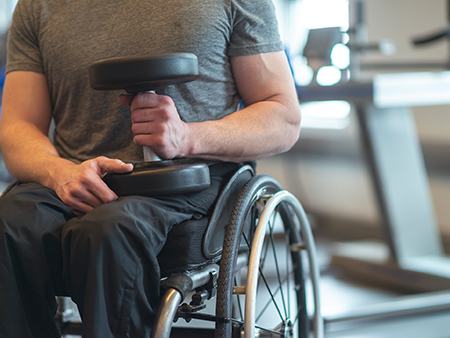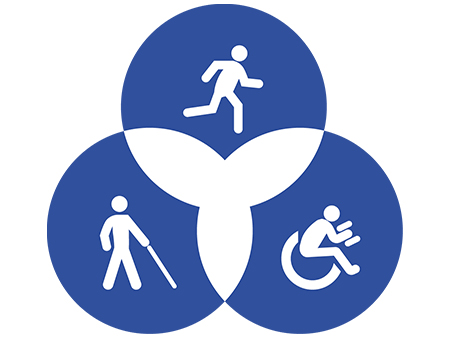 The perpetual association of current symbols with wheelchair users has been criticized for insufficiently representing individuals with other disability types.Recent research from the UAB School of Health Professions' Department of Occupational Therapy has assessed individual comprehension and perceptions of nine existing and newly created accessibility pictograph symbols, and it identified one that represented universal access to fitness equipment.
The perpetual association of current symbols with wheelchair users has been criticized for insufficiently representing individuals with other disability types.Recent research from the UAB School of Health Professions' Department of Occupational Therapy has assessed individual comprehension and perceptions of nine existing and newly created accessibility pictograph symbols, and it identified one that represented universal access to fitness equipment.
Symbols are used to convey messages in a clear, understandable manner, without the use of written language. The most widely recognized symbol used to denote access for persons with disabilities is the International Symbol of Access, or ISA; but this symbol has been criticized due to its passive nature — the white outline of a human figure resting idly in a wheelchair.
In response, various disability advocates have lobbied for an update of the ISA symbol to emphasize active mobility and independence. Additionally, the perpetual association of the symbol with wheelchair users has been criticized for insufficiently representing individuals with other disability types.
“This study focused on identification of a symbol to represent universal access to fitness equipment,” said Beth Barstow, PhD, OTR/L, SCLV, FAOTA, director of the UAB Graduate Certificate in Low Vision Rehabilitation program. “Results indicate that symbols with multiple icons may better represent inclusivity. It may be time to revisit symbols designating universal accessibility.”
A survey was disseminated electronically and face to face to individuals, groups and organizations affiliated with inclusive fitness equipment, space and programming, and 981 participants completed the survey. A symbol shaped as a Venn diagram containing three icons representing individuals with varying ability levels was ranked highest. There were no significant differences in group comparisons between participants with and without a disability, as well as with U.S. residents versus non-U.S. residents; 85.4 percent of participants demonstrated accurate comprehension of this symbol.
 A symbol shaped as a Venn diagram containing three icons representing individuals with varying ability levels was ranked highest. Barstow, who also holds an appointment with the UAB Center for Low Vision Rehabilitation, said the symbol that was identified in this study is now part of the ASTM International standards for “Standard Specification of Universal Design of Fitness Equipment for Inclusive use by Persons with Functional Limitations and Impairments.” ASTM International is a standards organization that develops and publishes voluntary consensus technical standards for a wide range of materials, products, systems and services.
A symbol shaped as a Venn diagram containing three icons representing individuals with varying ability levels was ranked highest. Barstow, who also holds an appointment with the UAB Center for Low Vision Rehabilitation, said the symbol that was identified in this study is now part of the ASTM International standards for “Standard Specification of Universal Design of Fitness Equipment for Inclusive use by Persons with Functional Limitations and Impairments.” ASTM International is a standards organization that develops and publishes voluntary consensus technical standards for a wide range of materials, products, systems and services.
“All newly developed fitness equipment, which adheres to these accessibility standards, will have this symbol on it, identifying it as being universally accessible,” Barstow said. “Although the symbol is currently included in a published set of standards, as with any new symbol, there will be a learning curve.”
She adds that she hopes this research will increase awareness and education of fitness facility personnel who will enhance adoption.
“Right now, the standards are not mandatory,” Barstow said. “So, it is not mandated that manufacturers develop accessible fitness equipment, thus the need for a follow-up study about barriers to production. When they develop accessible equipment, they will be allowed to put this symbol on the piece of equipment. It is our hope that they will begin to manufacture this equipment. The standards give a blueprint with test strategies for developing equipment that is accessible for people with various types of disabilities.”

